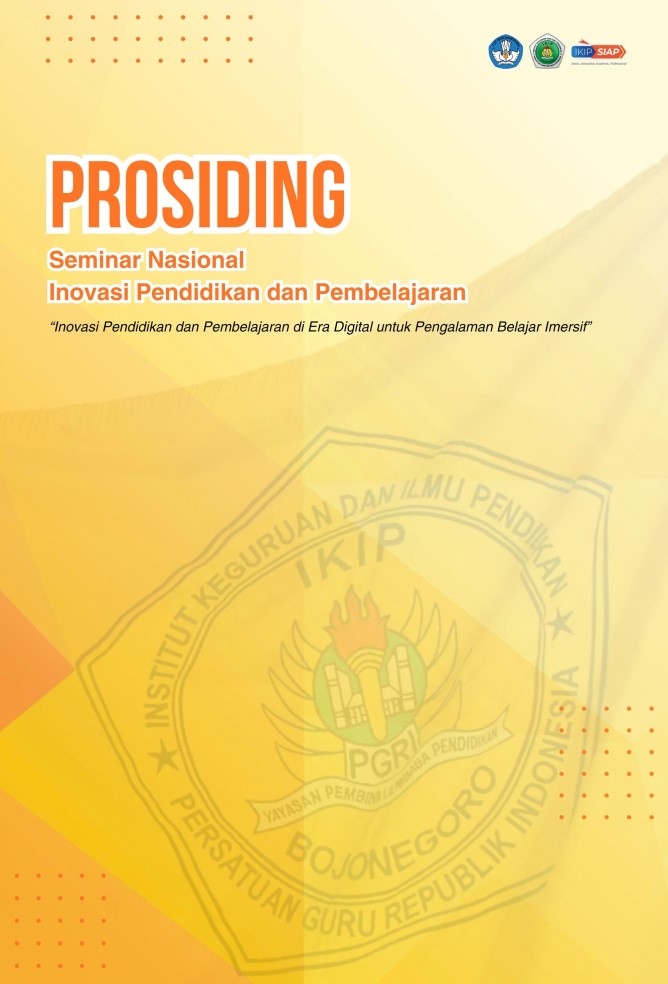Understanding Students’ Perceptions of Instagram in Enhancing and Supporting EFL Learner Autonomy
Keywords:
students’ perceptions, Instagram, autonomous learning, EFLAbstract
Abstract—This study aims to explore students’ perceptions of using Instagram as a tool for enhancing and supporting autonomous learning in the context of English as a Foreign Language (EFL) and to identify the influencing factors. A descriptive qualitative method was used, with data collected through questionnaires, semi-structured interviews, and documentation. The participants were 20 English Education students from the first to fourth year at IKIP PGRI Bojonegoro. The results show that most students positively perceive Instagram in autonomous English learning. Instagram is a tool that enhances motivation, enriches vocabulary, and provides flexible, engaging learning content. Features like reels, polls, quizzes, and Q&A support enjoyable self-learning routines. The factors influencing students’ perceptions include content quality, interactive features, supportive learning communities, and Instagram’s algorithm, which personalizes content based on user interests. These findings reflect the idea of digital learner autonomy, where students actively shape their learning environments based on their preferences and needs.
Keywords—students’ perceptions, Instagram, autonomous learning, EFL
abstrak—Penelitian ini bertujuan untuk mengeksplorasi persepsi mahasiswa terhadap penggunaan Instagram sebagai alat untuk meningkatkan dan mendukung pembelajaran mandiri dalam konteks Bahasa Inggris sebagai Bahasa Asing (EFL), serta untuk mengidentifikasi faktor-faktor yang memengaruhi. Metode deskriptif kualitatif digunakan, dengan data yang dikumpulkan melalui kuesioner, wawancara semi-terstruktur, dan dokumentasi. Partisipan terdiri dari 20 mahasiswa Pendidikan Bahasa Inggris dari tahun pertama hingga tahun keempat di IKIP PGRI Bojonegoro. Hasil penelitian menunjukkan bahwa sebagian besar mahasiswa memiliki persepsi positif terhadap Instagram dalam pembelajaran mandiri Bahasa Inggris. Instagram merupakan alat yang meningkatkan motivasi, memperkaya kosakata, dan menyediakan konten pembelajaran yang fleksibel serta menarik. Fitur-fitur seperti reels, polling, kuis, dan tanya jawab mendukung rutinitas pembelajaran mandiri yang menyenangkan. Faktor-faktor yang memengaruhi persepsi mahasiswa meliputi kualitas konten, fitur interaktif, komunitas belajar yang suportif, dan algoritma Instagram yang mempersonalisasi konten berdasarkan minat pengguna. Temuan ini mencerminkan gagasan tentang kemandirian belajar digital, di mana mahasiswa secara aktif membentuk lingkungan belajar mereka berdasarkan preferensi dan kebutuhan mereka.
Kata kunci—persepsi siswa, Instagram, pembelajaran mandiri, EFL
References
Al-Ali, S. (2014). Embracing the selfie craze: Exploring the possible use of Instagram as a language mLearning tool. Issues and Trends in Educational Technology, 2(2).
Benson, P. (2013). Teaching and researching: Autonomy in language learning. Routledge.
Bowen, G. A. (2009). Document analysis as a qualitative research method. Qualitative Research Journal, 9(2), 27–40.
Carter, N. (2014). The use of triangulation in qualitative research. Number 5/September 2014, 41(5), 545–547.
Creswell, J. W., & Creswell, J. D. (2017). Research design: Qualitative, quantitative, and mixed methods approaches. Sage publications.
Etikan, I., Musa, S. A., & Alkassim, R. S. (2016). Comparison of convenience sampling and purposive sampling. American Journal of Theoretical and Applied Statistics, 5(1), 1–4.
Handayani, F. (2015). Instagram as a teaching tool? Really? Proceedings of ISELT FBS Universitas Negeri Padang, 4(1), 320–327.
Indian Orthodontic Society, 46(4_suppl1), 273–277.
Krzysztof REJMAN, A.-J., & Porada, M. (2022). Social media-a new era of communication. In Humanities and Social Sciences 2022 Research Journal (Vol. 29, Issue 2).
Kvale, S. (2009). Interviews: Learning the craft of qualitative research interviewing. Sage.
Leaver, T., Highfield, T., & Abidin, C. (2020). Instagram: Visual social media cultures. John Wiley & Sons.
Little, D. (2007). Language learner autonomy: Some fundamental considerations revisited. International Journal of Innovation in Language Learning and Teaching, 1(1), 14–29.
Mack, N. (2005). Qualitative research methods: A data collector’s field guide.
Matin, M. F. (2023). Analysis of Student’s Needs in Speaking Skill for Secretarial Student. Prosiding Seminar Nasional Pendidikan FPMIPA, 1(1), 528–533.
Miles, M. B. (1994). Qualitative data analysis: An expanded sourcebook. Thousand Oaks.
Palfreyman, D. (2003). Introduction: Culture and learner autonomy. In Learner autonomy across cultures: Language education perspectives (pp. 1–19). Springer.
Rahmawati, O. I., & Tirtanawati, M. R. (2024). Investigating grammar learning strategy employed by student english study program. PROJECT (Professional Journal of English Education), 7(4), 946–952.
Rahmawati, O. I., Nurdianingsih, F., & Fitrianingsih, A. (2021). Motivating Students to Read Uses Online Digital Module. Prosiding Nasional Pendidikan: LPPM IKIP PGRI Bojonegoro, 2(1), 236–240.
Roopa, S., & Rani, M. S. (2012). Questionnaire designing for a survey. Journal of
Sharples, M., Taylo, J., & Vavoula, G. (2007). A Theory of Learning for the Mobile Age. In the Sage Handbook of Elearning Research; Andrews, R., Haythornthwaite, C., Eds. SAGE Publications: London, UK.
Thanasoulas, D. (2000). What is learner autonomy and how can it be fostered. The Internet TESL Journal, 6(11), 37–48.

